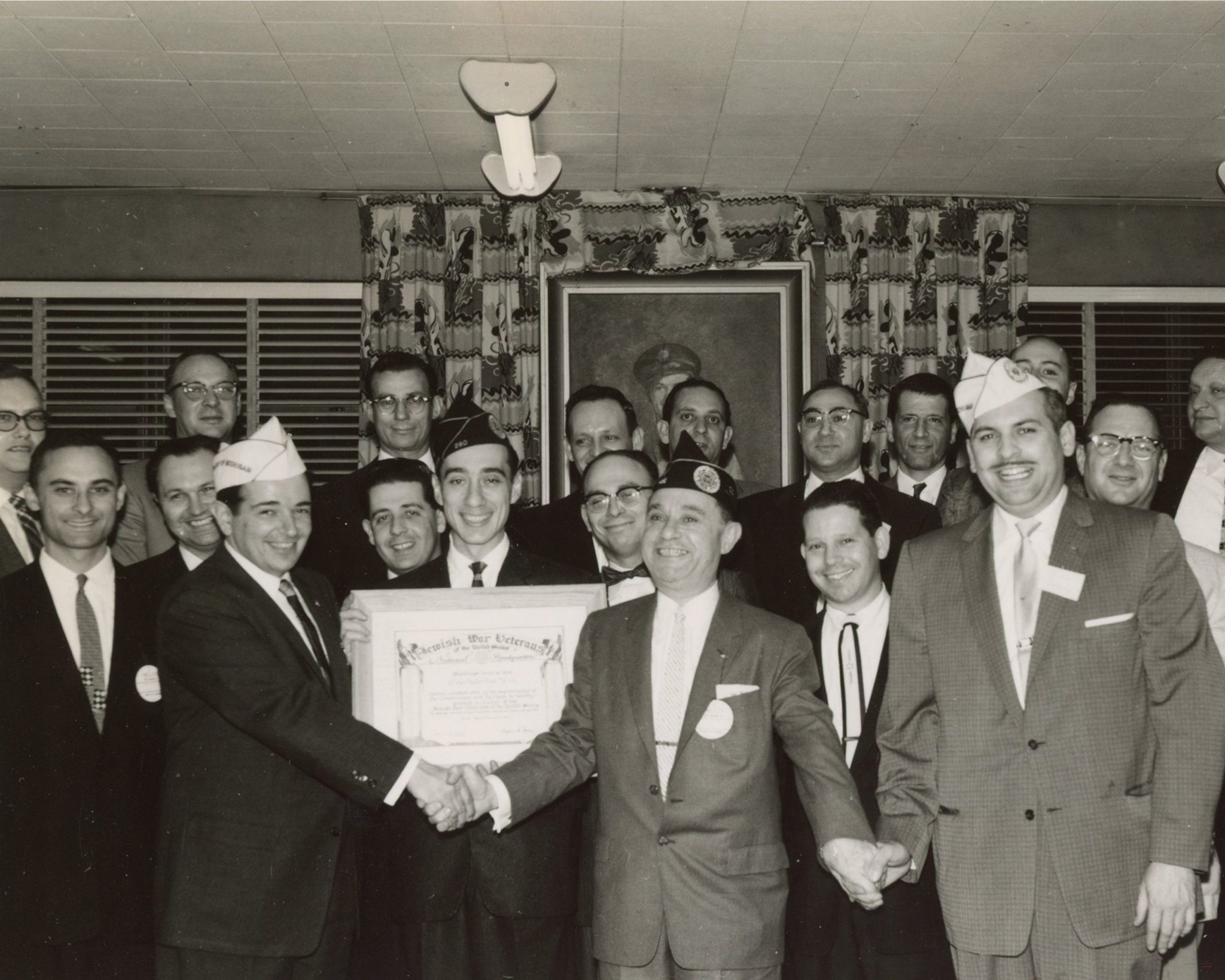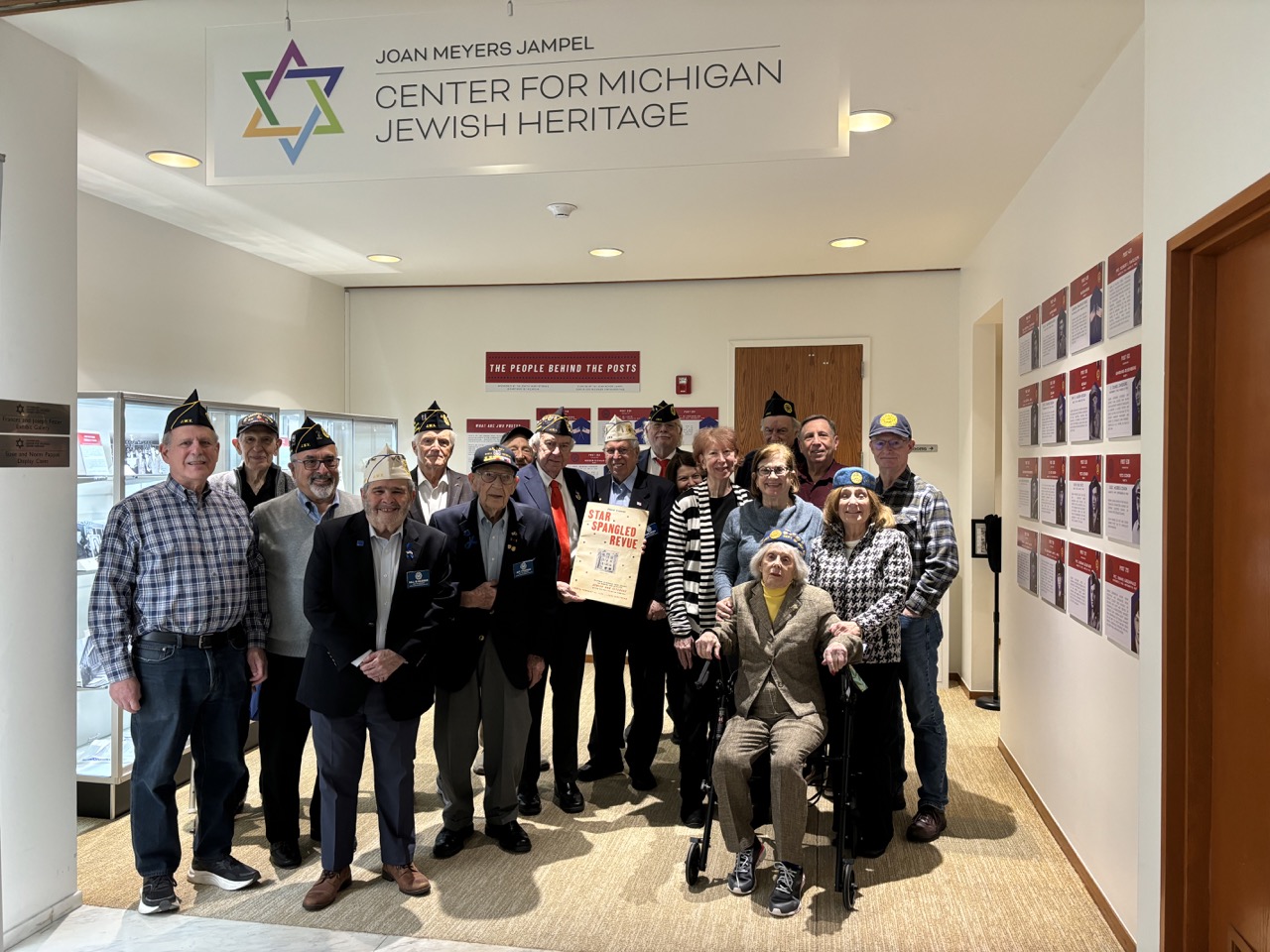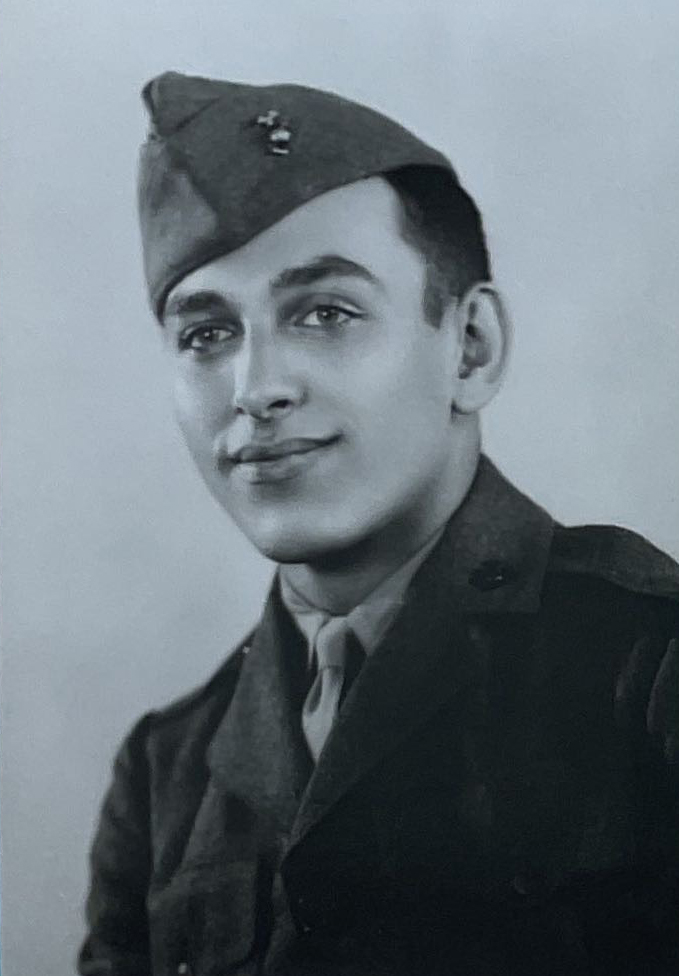At the Joan Meyers Jampel Center for Michigan Jewish History, you will find the primary source history of Jewish Michigan. If you’re thinking that sounds a little dull (admit it – you’re picturing a dark, creepy room with dusty, old boxes and crumbling paper), then you have yet to experience the Jampel Center!
As a collaboration between the Leonard N. Simons Jewish Community Archives of the Jewish Federation of Detroit and the Rabbi Leo M. Franklin Archives of Temple Beth El, the Jampel Center is home to the documents, photographs, audiovisuals, and more that tell our community story.
It’s also the place where we bring history back to life (no, that does not include ghosts). Through programs, presentations, social media, exhibits, and more, we’re ensuring that those who came before are not forgotten.
This is especially true for our Jewish War Veterans (JWV). The JWV advocates for the care and rights of Veterans and supports local Veteran Activities. Above all, it educates the public about the contributions of Jews to the U.S. Military and serves as a reminder of those who gave their lives in service to this country. On March 25, 2024, National Medal of Honor Day, the Jampel Center welcomed the JWV Department of Michigan to the opening of our newest exhibit, The People Behind the Post.
A “post” is the community level body of the Jewish War Veterans. Since Michigan’s first post in 1936, there have been more than 25 posts in the state. Most were named to honor a serviceman, often one who gave the ultimate sacrifice. The People Behind the Post seeks to recognize these individuals through the telling of their stories. In addition, photos and artifacts that represent the great work of JWV, and its Ladies Auxiliary, are on display.
One post you will learn about in the exhibit is the Ginsburg-Rosenberg Post 513, named to honor Lieutenant Daniel Ginsburg and Machinist’s Mate First Class Joseph Rosenberg. Though we were limited in how much we could include in the exhibit, there is so much to uncover in their stories.
Before WWII, Ginsburg attended East Detroit High School and Wayne State University and was a gifted writer and artist. Rosenberg was employed by Kahn Architects. Both were ardent Zionists and active in the Habonim movement.
As part of their work within the Labor Zionist movement, Ginsburg and Rosenberg helped to create Detroit’s Camp Kvutza Kinneret (Camp Kinneret) in Chelsea, Michigan in 1939. Organized by the Habonim Organization, the camp was conducted on a cooperative basis where campers and staff members shared in all the work of the camp.
In fact, it was the campers themselves, boys and girls ranging from ages 14-18, who converted the campgrounds into a habitable space with buildings, water, and sanitation systems. This self-help model was similar to the collective labor settlements in (what was then) Palestine. The camp functioned through self-labor, self-government, and a robust program of Jewish and general educational content with the hope that these young people would pioneer a new Jewish state.
During WWII, Ginsburg joined the Marine Corps and just before his first battle, wrote these moving words to his parents:
“…we’re all only little cogs in a machine, and if some of us have to fall by the wayside in order that the machine should continue to run smoothly, it is worthwhile. After all, it’s the machine that counts, not the little cogs. And if I don’t come back, will you try to make my folks understand that it isn’t such a tragedy – that their son isn’t better than anyone else’s son – and unfortunately, he happened to be just as vulnerable.”
Just days later, on March 8, 1945, he was killed on Iwo Jima at the age of 22.
Rosenberg, too, died tragically while he was serving in the Pacific Theater, on May 2, 1944. He was 20 years old.
The Ginsburg-Rosenberg Post 513 was established in 1946 to honor these two heroes who were never able to see their dream of a Jewish homeland realized.
People Behind the Posts will be on display in the Fetter Exhibit Gallery within Temple Beth El through summer 2024. To schedule a time to visit, contact us at mijewishheritage.org.
To learn more about the Joan Meyers Jampel Center for Michigan Jewish Heritage, visit our website. And to explore the records of the Jewish War Veterans Department of Michigan, visit our digital database.
Images Courtesy of the Jewish War Veterans Department of Michigan Collection, Rabbi Leo M. Franklin Archives.
So You Think You Know is a new series that will explore a different area of Detroit’s Jewish history each month through the collections of the Joan Meyers Jampel Center for Michigan Jewish Heritage. You may think you know the story, but the truth is in the documents!





